If you are looking wholesale lighting solutions, click here.
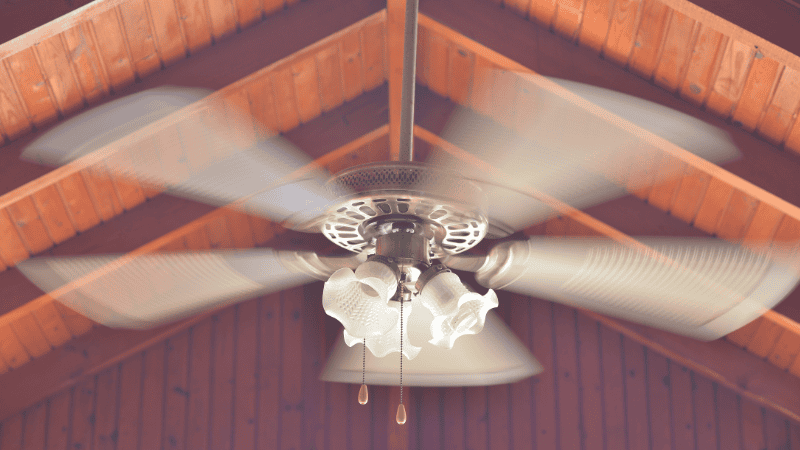
Does your house feel like a furnace in the summer, even after you have installed a fan? Believe it or not, research shows that depending on the direction you have installed your fan, it can impact the level of comfort you feel in your room.
Confused? Don’t worry, and continue reading. In this complete guide, we will show you the reason why the directions are important and how we can adjust them. It will save your money and still keep you feeling cool and comfortable during the summer days and the cool days.
The biggest reason why your fan direction matters is that it can help you improve the air circulation of your room, which is important for keeping it cool and comfortable even during the hottest day of the summer season.
Moreover, depending on the changes you are willing to make, you can reduce the energy your ceiling fan uses.
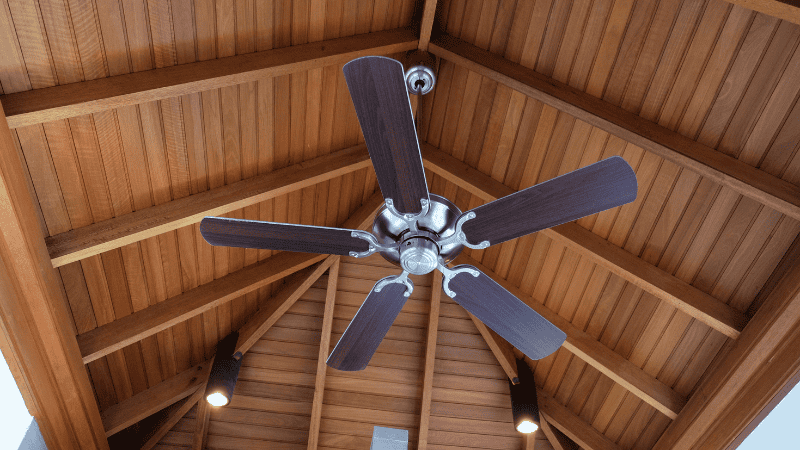
Proper fan direction in summer and spring can affect how air circulates in your room.
For instance, if you make your fan go anticlockwise, it will send the air downwards and allow you to keep your room cool, and this also removes hot spots as well as improves the temperature in the room, even if it’s scorching outside.
What will you get? An evenly circulated in every nook and corner of your room! Beat the summer heat by setting the fan in the right direction.
When the summer temperatures are soaring, you might want to turn on your AC, but with current energy costs, you’re worried about high energy bills. So what can you do?
Easy! After you have turned on your air con, you can either lower it or completely turn it off and use the ceiling fan in the room on a low setting. Allowing you to maintain the chilly environment while saving money.
By setting your fan in the right direction and temperature, your AC unit doesn’t have to work as hard. Consequently, you can reduce your energy consumption and enjoy fantastic cost savings!
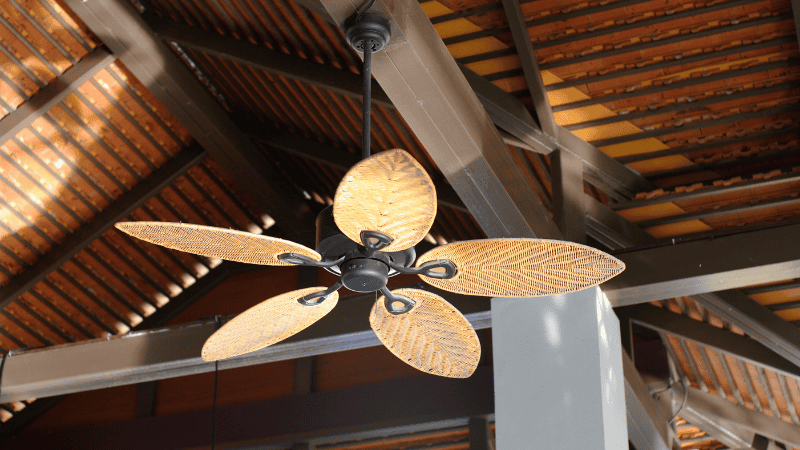
Understanding air movement is key to effective cooling! It also keeps your appliances and cooling devices in the best condition. If you don’t set your ceiling fan right, it might overwork, and the fan motor can get hot.
This could cause a short circuit and burn the wiring. To prevent that from happening, you can place the fan in a way that it throws the warm air from your room outside and reduces the temperature.
With the reduced strain on your HVAC system, you can prolong its lifespan and save money on costly repairs.
Setting your ceiling in an anticlockwise motion during summer can improve airflow and room ventilation. Wondering how?
It’s simple: the fan increases air velocity to create a ‘feels like cooling’ effect and ensures equal air distribution.
On the other hand, if you make it go counter-clockwise, it will start pushing the air downwards and reduce the number of warm spots in your room.
Also, you can even make your blower go clockwise during the cold days to pull the cold air from the room. Allowing you to maintain your comfort level no matter the season.
To get the most out of it while still maintaining your comfort, you will need to change the location as well as the direction of your fan, depending on the climate.
Why? Depending on the direction your fan is rotating, it can greatly impact the air in your room. Here are some fan direction recommendations to get the most out of your fans.
From May to August, make sure that your fan is rotating clockwise in the summer. This direction will allow you to push the air down so that it can create a wind-chill effect.
Moreover, the faster your fan spins, the quicker your room will cool down and remove the hot spots in the area, and the best part is, you won’t even need to lower your HVAC Unit.
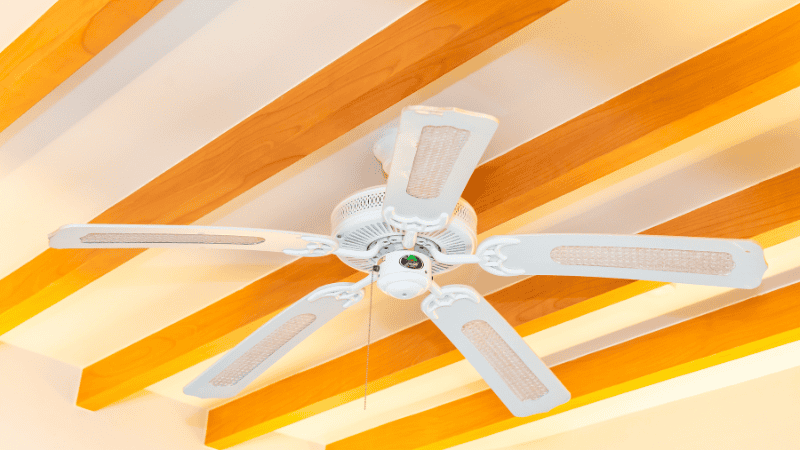
During the winter season, you should set the direction of your air blower in the opposite direction, and that too at a low speed. It is because the fan will then effectively pull up the cold in an upward direction and gently redistribute the air throughout the room.
As a result, you’ll feel warmer without overusing your heating system. This will minimize energy usage and lower your carbon footprint
Individuals who might be having a difficult time changing their fan direction can install a smart fan that comes with a reverse switch.
It will allow you to easily switch the direction of your fan without requiring you to do any additional work. All you need to do is press the small switch on the motor housing and change the direction of your fan movement.
On the other hand, if you have a traditional fan and don’t mind a little bit of work, you can switch the blades on it and install them in the opposite direction, which will have the same effect.

Knowing which direction your fan should rotate is one thing, but knowing how to do it is another issue. Want to know how? It’s quite simple. You just need to follow these simple steps.
Let’s start slowly by making sure that you have switched off your fan beforehand. Why? So that it can cool down and prevent you from burning your hand.
Before you start deconstructing your fan, see if you can find a small switch on the fan. You can even find them near the light fixture. This button controls the direction of the blade and sets it in clock and counterclockwise movement.
If you do find a switch, press or slide it in the other direction. Whereas if you don’t find the switch, you will need to change the position of your blades.
Click the button to turn your fan back on and check whether the airflow is directed downwards. If cool air hits your face, you’ve set it correctly for the summer season!
Depending on the type of installation you have done, you might also have a speed setting. Use it to increase the cooling in your room. Remember, the higher the speed setting, the better comfort you’ll enjoy during the stifling hot summer days.
The correct ceiling fan rotation can result in several practical benefits, including:
After you have made your ceiling fan go anti-clockwise, it will take all the hot air from your room and bring in the cold air from the outside, creating a wind-chill effect and providing you with comfort.
Moreover, this simple technique will keep your room cool even if your HVAC thermostat is set at a higher temperature.
Using your ceiling fan correctly means your air conditioner doesn’t have to run as long, helping you save on electricity bills during the summer. In fact, higher speeds can result in a 76% reduction in energy use, lowering your energy usage significantly.
Since you will be able to keep your room chill with just your fan, it will aid in reducing the need for your air-con, leading to lower energy consumption. Which in turn will allow you to create a smaller carbon footprint and improve the environment around you.
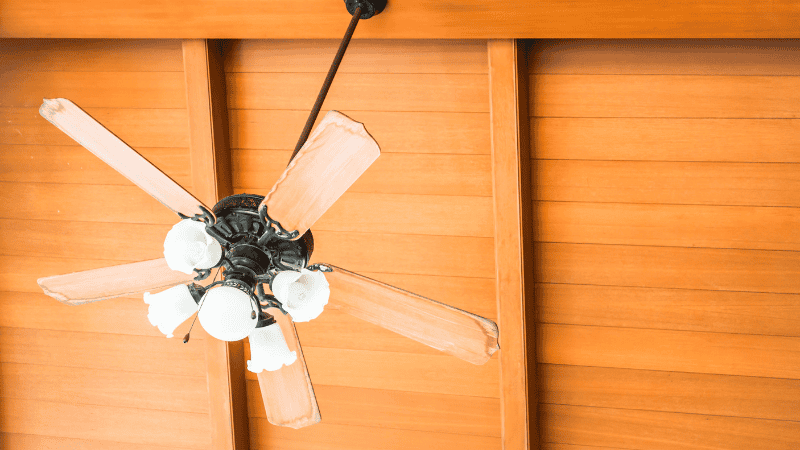
Depending on how effectively you use your ceiling fan, you can distribute air in a way that will allow you to keep the area cool. Here are a few ways you can use the air blower at optimum levels.
You should never use the AC unit alone during hot summers. It is because you have to set the thermostat at a lower temperature, which will consume more electricity. The best way to approach this issue is by using your fan alongside your AC unit.
This allows you to draw in the cool breeze from the AC unit and spread it evenly throughout the room. It will effectively maintain the coolness of the space even when the thermostat is at a high level.
In summer, you should set your fan at the top speed so it can quickly blow the warm air out and push down the cool air in the room. This will also bring down the indoor damping levels and mitigate that sticky, sweaty feel.
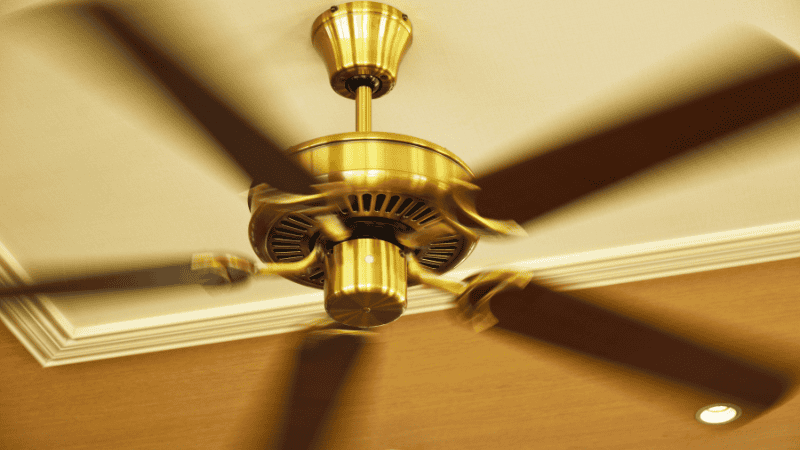
Modern smart ceiling fans can adjust speed and direction automatically, making it easier to optimize performance. This means you don’t need to manually regulate speed and direction.
An Energy Star-certified fan consumes 60% less energy compared to non-certified, standard models.
Due to microscopic dust particles in the air, your fan gets dirty. These particles get stuck on the blades and duct of the fan, which lowers its performance and efficiency.
By cleaning the fan blades regularly, you prevent this buildup, allowing your cooling system to operate at its full potential and ensuring better performance and energy efficiency.
Additionally, keeping the fan blades clean helps prolong the lifespan of the fan and reduces the risk of mechanical failures.
The productivity of a ceiling fan depends highly on the direction it is rotating, which should be determined according to the room’s purpose and layout. Why is that? Because the right direction will make sure that air is spreading appropriately, allowing you to create a comforting environment.
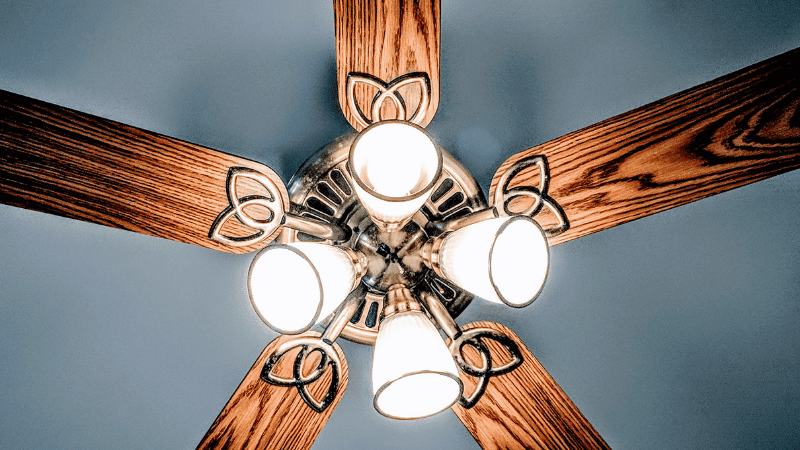
Here’s how to reap the full benefits of ceiling fans by modifying their direction depending on the room they are in.
For rooms that might have high ceilings, individuals can make their fans go clockwise at a lower speed. This will allow them to bring the warm air from the ceiling down below, allowing you to keep the room cozy without requiring a heating system.
A gentle breeze can elevate dining experiences. During summer, make your fan go counterclockwise. This will allow you to bring in light and refreshing air in the dining area, providing you with the maximum amount of comfort.
Depending on how much you use your living room, it can cause it to have an uneven dispersal of temperature.
You can fix that by making your ceiling fan go counter-clockwise during winter to distribute the warm air evenly in the room, whereas you can use the same direction in the summer to distribute the cold air evenly.
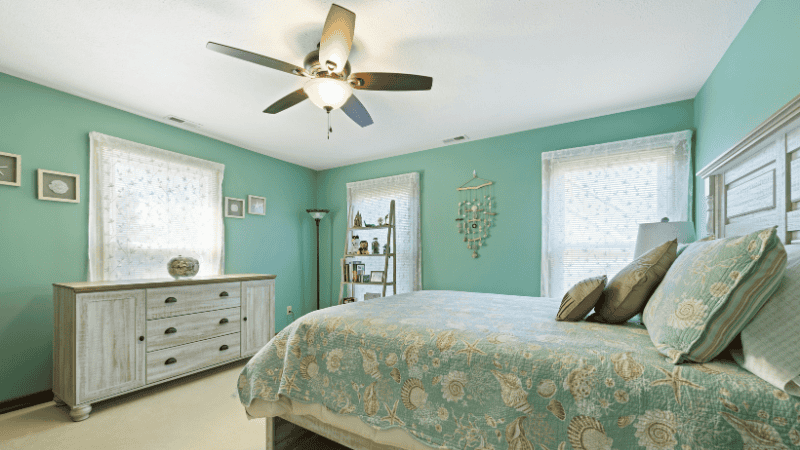
To make sure that you have an undisturbed sleep, you can make your room fan go counter-clockwise in summer to get a cooling breeze, whereas in winter, you can make it go clockwise to get the warm air from the ceiling.
Even though you can’t replace your air-con with your ceiling fan, especially if you want to reduce the temperature at a much greater rate.
However, if you do use your air blower effectively, you can minimize the usage of your air conditioner and keep yourself cool even if it’s scorching outside.
By using an air blower with your air con, you will be able to evenly spread the air around your room, allowing you to remove any hotspots and create an overall comforting zone.
Moreover, this adjustment might lead to potentially high savings on energy bills while also reducing the pressure on your AC unit, which extends its lifespan.
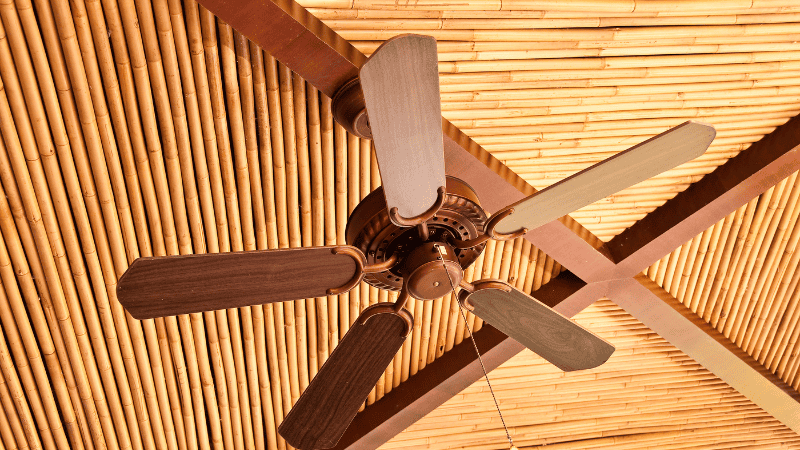
On days when the temperature is tender and the heat isn’t unbearable, a ceiling fan could be your go-to cooling solution.
Fans produce a gentle breeze that promotes air movement, making the room feel several degrees cooler without actually lowering the temperature. This effect is ideal for early mornings, evenings, or during transitional seasons.
When the mercury rises and outdoor temperatures become unbearable, ceiling fans alone may not provide adequate relief. Air conditioners are indispensable for bringing down the actual temperature in such conditions.
If you use ceiling fans in the wrong way, it will reduce their effectiveness and make the indoor area more uncomfortable. From setting the fan in the wrong direction to incorrect speed, these little mistakes can cause significant energy inefficiencies and poor comfort levels.
Here, we will discuss three common pitfalls you should avoid when using ceiling fans.

One common mistake many people make is running the fan in the wrong direction, which can severely affect the airflow and overall cooling efficiency.
This is why you will have to make sure that your fan is rotating counterclockwise in summer. This direction pushes air downwards and keeps you cool even if the indoor temperature hasn’t changed.
Moreover, running it in the wrong direction could lead to inefficient airflow and increase energy consumption.
If you set a fan on low, it will not be able to produce enough air circulation. Cursing your room to remain hot and stuffy. On the other hand, using the fan on the highest setting might lead to too much airflow, especially in smaller rooms.
This can make the air feel choppy and, in some cases, cause discomfort. It’s essential to find a balance. A higher setting can be helpful in larger rooms, but in smaller spaces, a moderate setting will ensure comfortable air circulation without creating an overwhelming breeze.
What a lot of people don’t know is that fans require proper ventilation. Why? Because without it, air becomes stagnant, causing the fan to reuse the same warm air over and over again and failing to get the room cool.
To maximize the cooling effect, ensure that windows or doors are open to allow the air to circulate.
Doing this will create a cross-breeze that helps in cooling the space naturally, heightening the fan’s capability of circulating fresh air and maintaining a comfortable temperature.
Here are some handy tips that will allow you to make the most out of your ceiling fan, depending on the location you are using it. Plus, this way, you can control your energy bills and reduce your carbon footprint for a greener tomorrow.
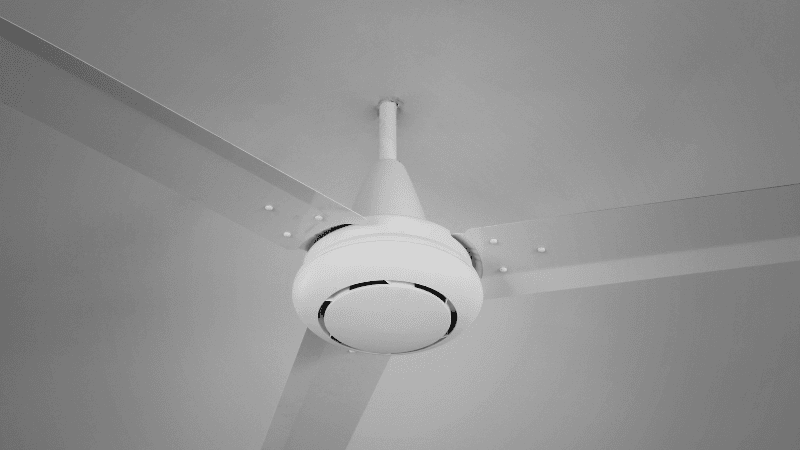
By using the right techniques, you can use your ceiling fan effectively and create a cool and comforting environment without requiring the help of your AC unit.
You just have to make sure that it is rotating in the right direction and is clean. Plus, this practice will also help you reduce your energy bill.
Now that you know how a ceiling fan can enhance indoor comfort, all you need is the perfect fan for a cooler, more organized home this summer! Retailers like Risun offer high-quality products and services to improve home comfort.
Contact us now to find the ideal fan for your home and enjoy a refreshing, cool summer!
Yes, rotating counterclockwise is best for producing the cool air you need in summer. It will create a downward airflow for a wind-chill effect. This will keep you cool even on the hottest days without actually lowering the temperature.
It depends on the season. But to determine if the fan is set in the right direction, stand underneath while it’s on. To remove heat, the air direction should be downwards, while for cozy wintertime, the airflow should be upwards.
Absolutely! Ceiling fans are there to help cool the air and reduce the load on your air conditioner, which lowers usage and the cost of energy.
If your fan doesn’t have a reverse switch, you will need to remove the blades of your fan and adjust them accordingly.
Comprehensive Lighting Solutions for MRO Wholesalers and Professionals
send your inquiry
Hi, I'm the author of this post, and I have been in this field for more than 15 years. If you want to wholesale lighting fixtures or lighting related product, feel free to ask me any questions.
Learn More >>Download our catalog to view all of our lighting products.
Ready to get started ?
Send Your InquiryOur team will get back to you promptly

please
download
Get notified about new products
Our team will get back to you promptly!
Add your first comment to this post